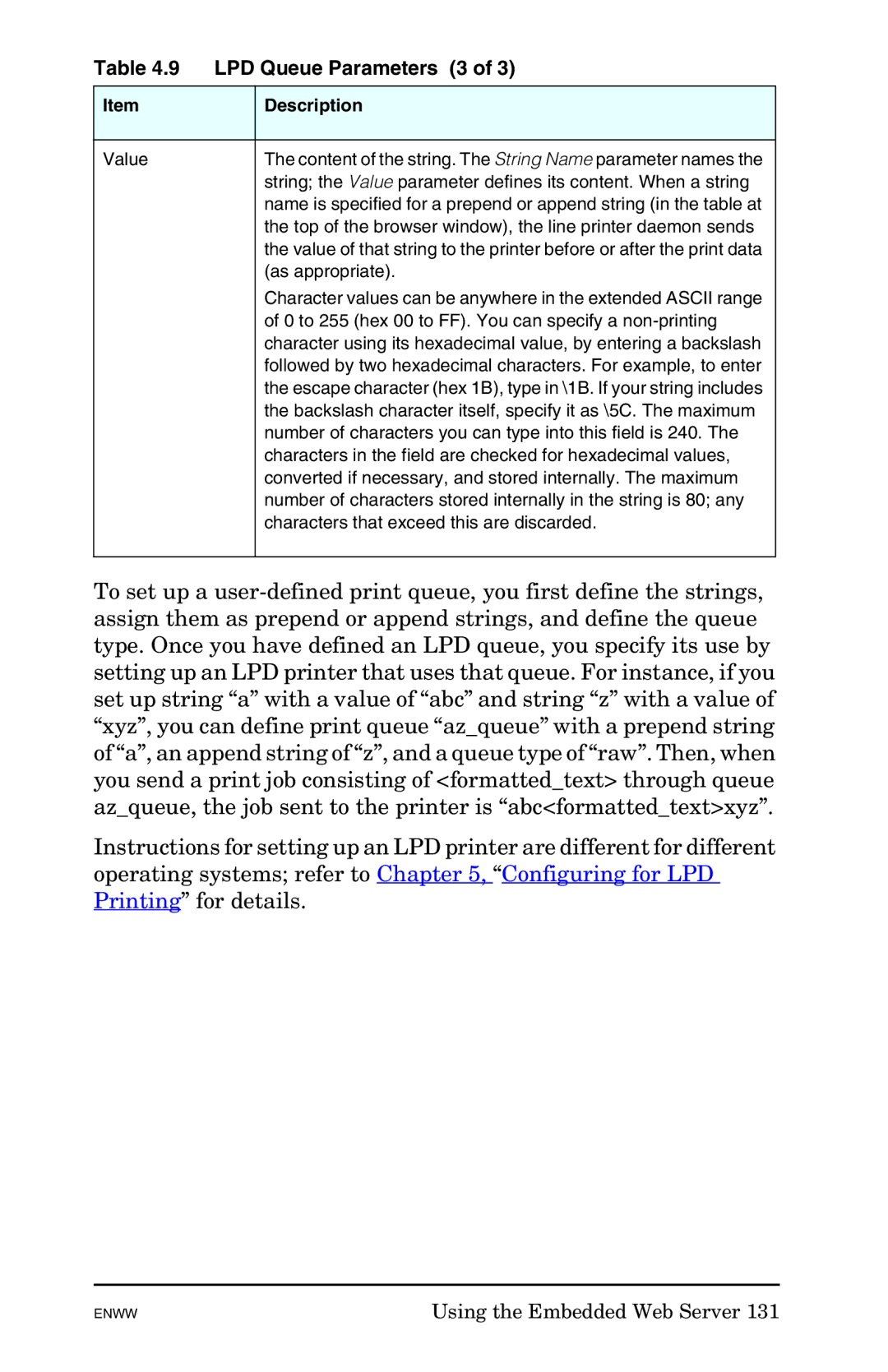
Table 4.9 LPD Queue Parameters (3 of 3)
Item
Value
Description
The content of the string. The String Name parameter names the string; the Value parameter defines its content. When a string name is specified for a prepend or append string (in the table at the top of the browser window), the line printer daemon sends the value of that string to the printer before or after the print data (as appropriate).
Character values can be anywhere in the extended ASCII range of 0 to 255 (hex 00 to FF). You can specify a
To set up a
Instructions for setting up an LPD printer are different for different operating systems; refer to Chapter 5, “Configuring for LPD Printing” for details.
ENWW | Using the Embedded Web Server 131 |
